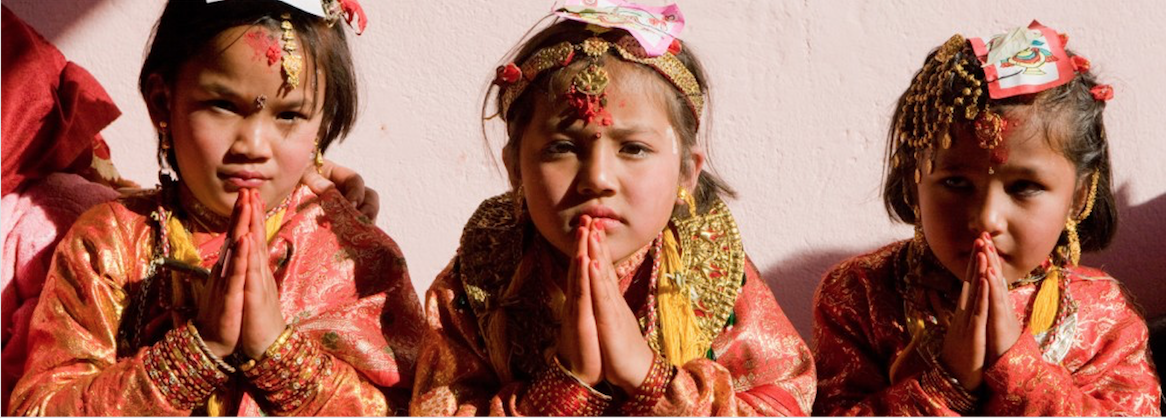Nepalese Customs & Culture
By Sarah Dean
Nepal is famously attractive for adventure seekers, mountain hikers and rock climbers. Apart from a gorgeous destination for adventure, it is famous for its local lifestyle, culture, traditions, historical heritages and ever welcoming nature of Nepalese. Therefore, it is very important to be culturally aware before travelling to Nepal as they are a country with customs that are embedded with their cultural traditions.
Nepal has a population of over 27 million people, and have many different ethnic groups that coexist. The country is appreciated for its wide range of culture diversity and groups living together in peace and harmony.
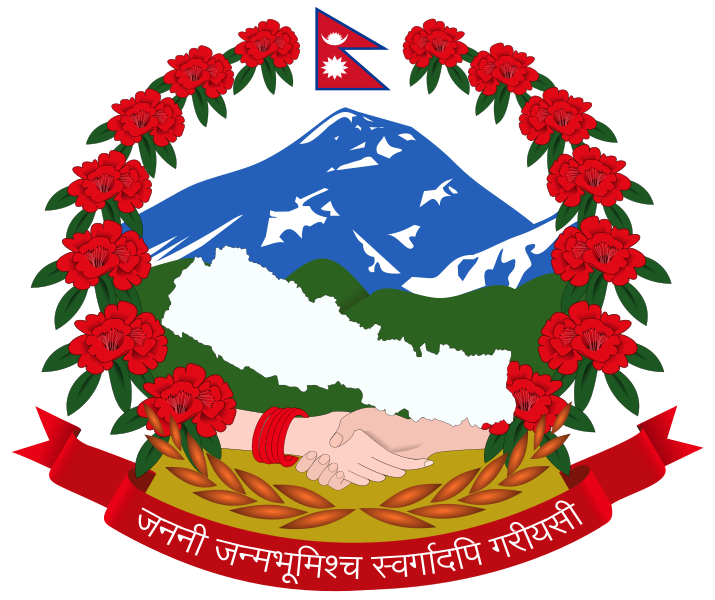
Religion & culture
There are 126 castes and ethnic groups speaking 123 languages throughout Nepal and each community have their own customs and traditions that differ from one part to another. The city of Kathmandu is very modernized and broad and enjoys a rich blend of cultures, recognized as a national identity for Nepal.
Kathmandu has acted as Nepal’s ‘centre of culture’ since the unification of the country in the 18th Century. Religion is a part of everyday life for Nepali’s and adding colour to their lives are festivals that are held year-round to celebrate their beliefs in ceremony.
Dashain
This festival is also known as “Bijaya Dashami” which is celebrated in Nepali month Kartik month (October in solar calendar) and lasts for 10 days. This festival is one of the grandest, longest and most auspicious celebrated by the whole country for the goddess Durga’s victory of the justice over evil or demons. Dashain holds as an extremely significate festival which also emphasized the importance of family reunion which is helpful to ease social contradictions. All the government offices, educational sectors and other public sectors will be closed down during this festival period.
Tihar (Deepawali)
This day is called “Brothers day” where sisters will honour their brother and pray to Yama, the god of death, for their brother’s prosperity, progress and longevity. This festival is a time of fancy sweets, gifts and juicy fruits.
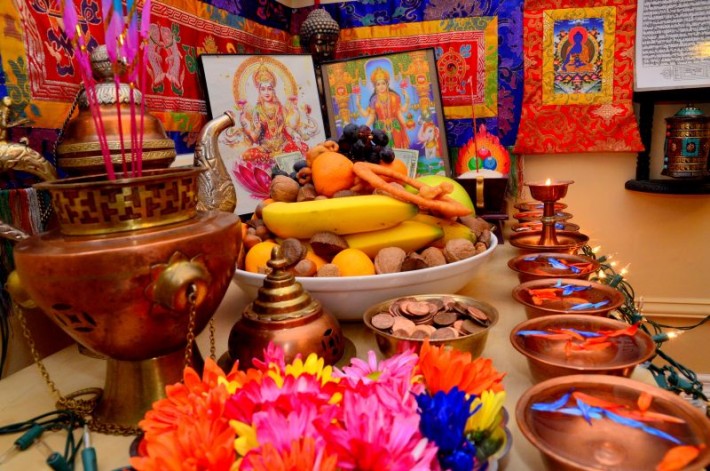
Basanta Panchmi
Basanta panchami of Shree panchmi honours the deities of knowledge and learning. Hindus honour the goddess Saraswati and Buddhists the god Manjushre. The day is also considered one of the auspicious in the year to get married. On this day upper class Hindu boys are given their first initiation as it is dedicated to learning. Basanta Panchami is also a festival that marks the preparations for the arrival of new spring in Nepal which is celebrated in various ways. This festival is dedicated to Saraswati, the goddess of education, knowledge, language, music and arts. On this day, people wear yellow clothes, eat yellow sweet dishes and display yellow flowers in their homes. The kids are given their very first lessons in reading and writing as a start of schooling.
Teej
A Hindu festival of womanhood day reflects on the occasion when Parbati, the daughter of Himalaya, won the hand of Lord Shiva after long meditation and fasting. Dancing, flock song, and the colour red dominate the day of Teej.
Mani Rimdu
This festival is for the Sherpas of Khumbu in the Everest region. It is a sequence of nineteen days celebrations which ends with three days of public festivities. This is initiated with the blowing of horns by Buddhist monks, followed by prayers and chants of gratitude. On the final day monks participate in a sacred dance with the use of masks to perform the symbolising of the destruction of evil forces.
This festival is for the Sherpas of Khumbu in the Everest region. It is a sequence of nineteen days celebrations which ends with three days of public festivities. This is initiated with the blowing of horns by Buddhist monks, followed by prayers and chants of gratitude. On the final day monks participate in a sacred dance with the use of masks to perform the symbolising of the destruction of evil forces.
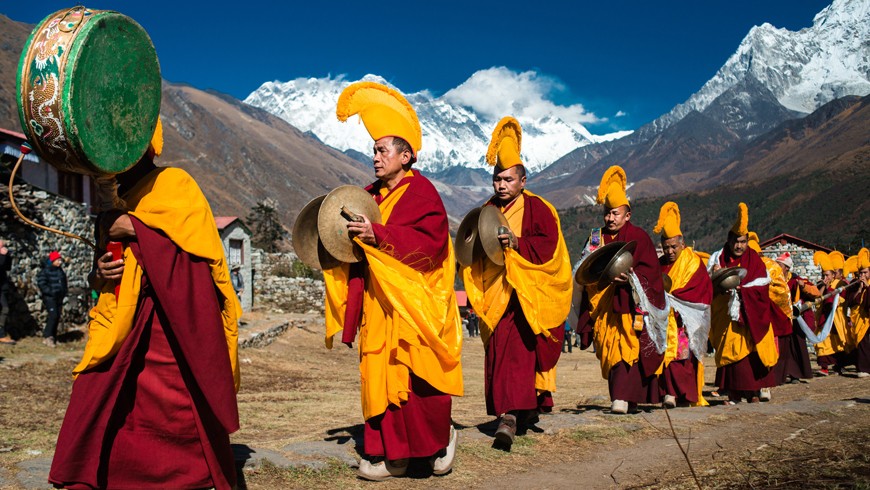
Each festival holds its own beauty and uniqueness, adding colours to their culture and religion which has attracted foreigners over the years.
Nepal has a diverse religious make-up which includes Buddhism, Islam and Christianity and most widely practised, Hinduism. Nepal is the birthplace of the founder of Buddhism and has spread throughout Nepal and the rest of Asia. Ethnic groups that follow Buddhism have helped preserve Buddhist culture through rituals, food and artwork.
But Hinduism is the dominate religion, making up over 80% of the population. It has a huge influence on the social practices of Nepal, this is very evident by the wide array of Hindu temples, shrines and festivals which are national holidays.
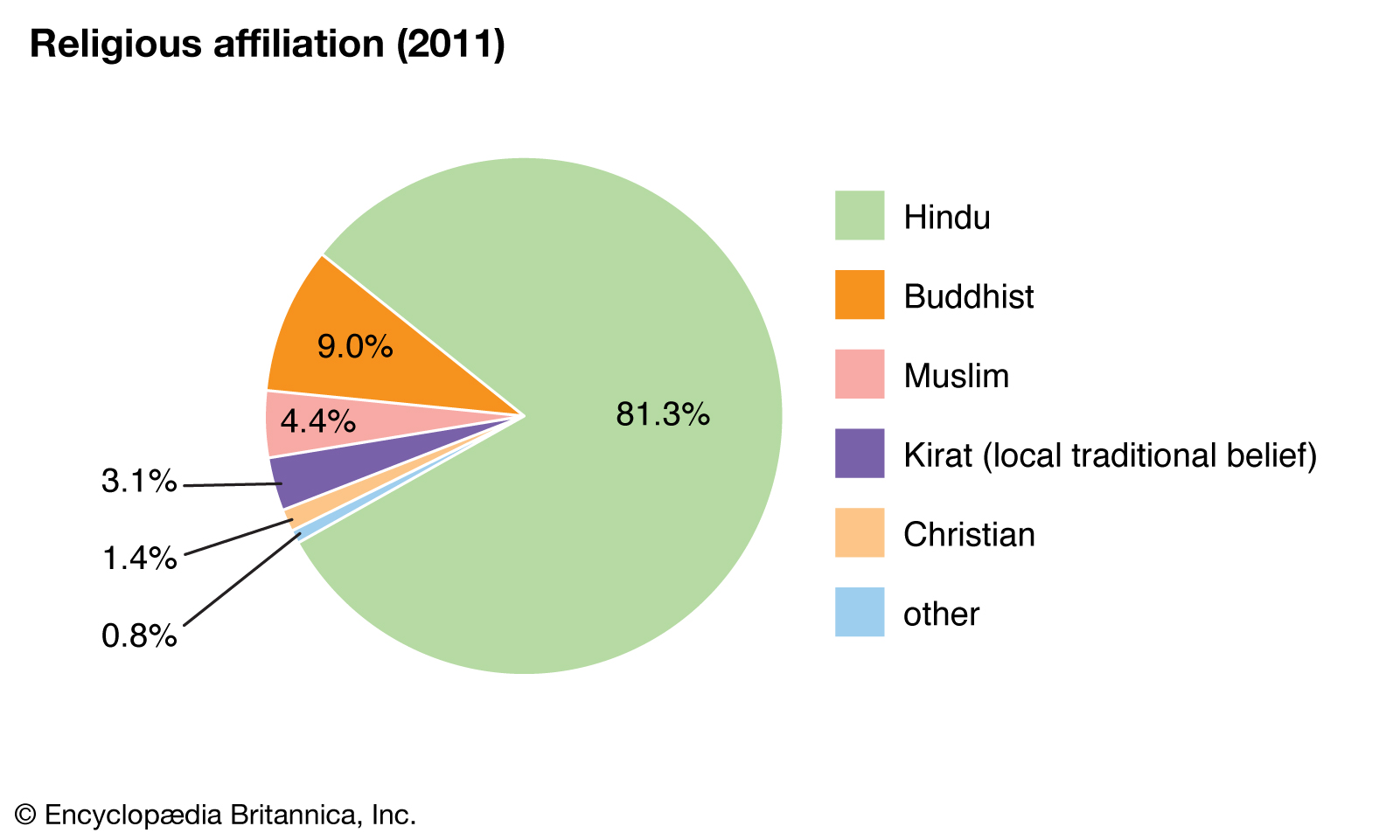
The national animal of Nepal is a cow and it is a serious custom by all to not eat this animal. To Nepalis, a cow is worshiped and considered as a goddess of wealth and prosperity, so it is completely banned to eat beef. Killing or eating a cow is considered to be a crime as per letter of the law and people are punished by paying a fine or imprisoned. It is recommended that foreigners do not ask for beef in Nepal showing respect to the culture and tradition.
Temples & cultural sites
One of the most popular temples sighted on our trips to Nepal is Swayambunath Stupa also known as the “Monkey Temple.” Located in Kathmandu Valley and although the site is considered Buddhist, the place is respected by Buddhists and Hindus. The dome at the base represents the entire world and the thirteen pinnacles on the top symbolize that sentient beings have to go through the thirteen stages of spiritual realizations to reach enlightenment.
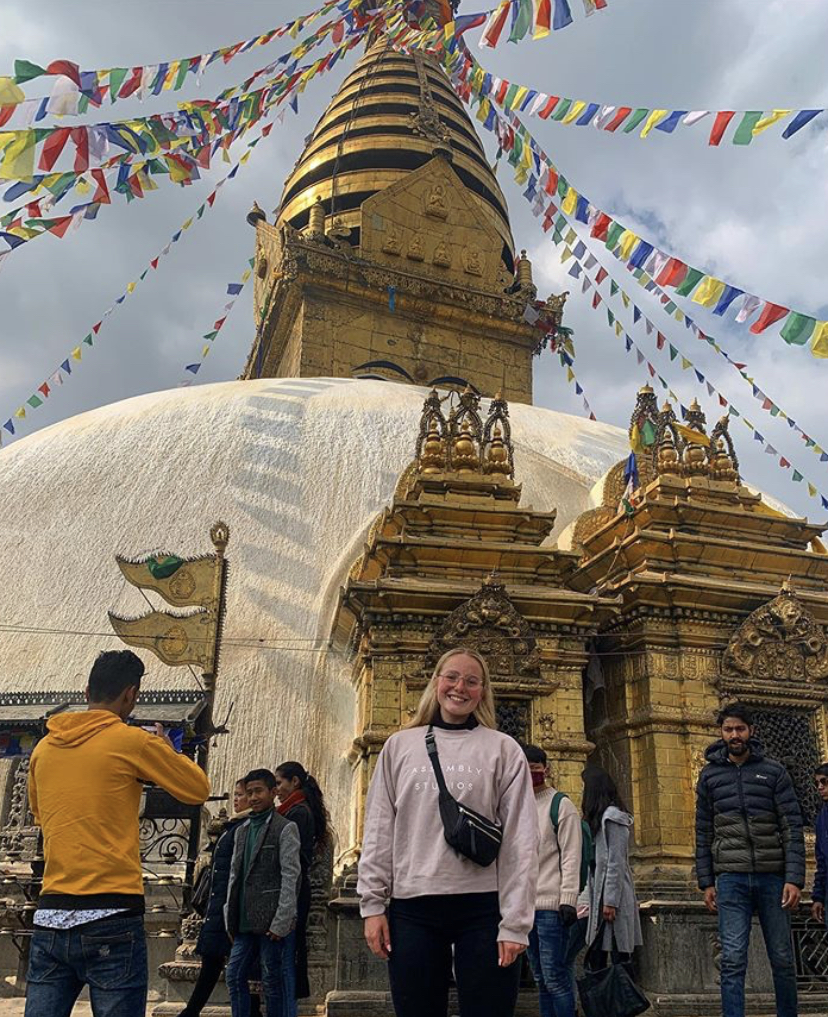
Another important Buddhist site is Namobuddha Stupa which is sacred because of its inspiring legend. In a previous life as a prince, Buddha came across a tigress close to death from starvation and could not feed her cubs. In an act of compassion, he let her eat him which transferred him to the higher realms of existence.
Before the unification of Nepal, the country was made up of smaller kingdoms. The Three Durbar Squares (Kathmandu Durbar Square, Bhaktapur Durbar Square, and Patan Durbar Square) in Kathmandu Valley are the most famous remains of those old kingdoms. They consist of temples, courtyards, shrines and palaces listed as World Heritage Sites by UNESCO.
Greetings and thanks
Greetings and common courtesy are very important in Nepal, even if you do not know the person. A smile goes a long way, whether it be to a friend or a stranger you are passing along the street.
The traditional greeting word in Nepal for hello is Namaste (Na-mah-stei) or Namaskar (Na-mah-skaa) which directly translates to “I greet the god within you.” This is done with a nod of the head which is considered as a sign of respect to each other.
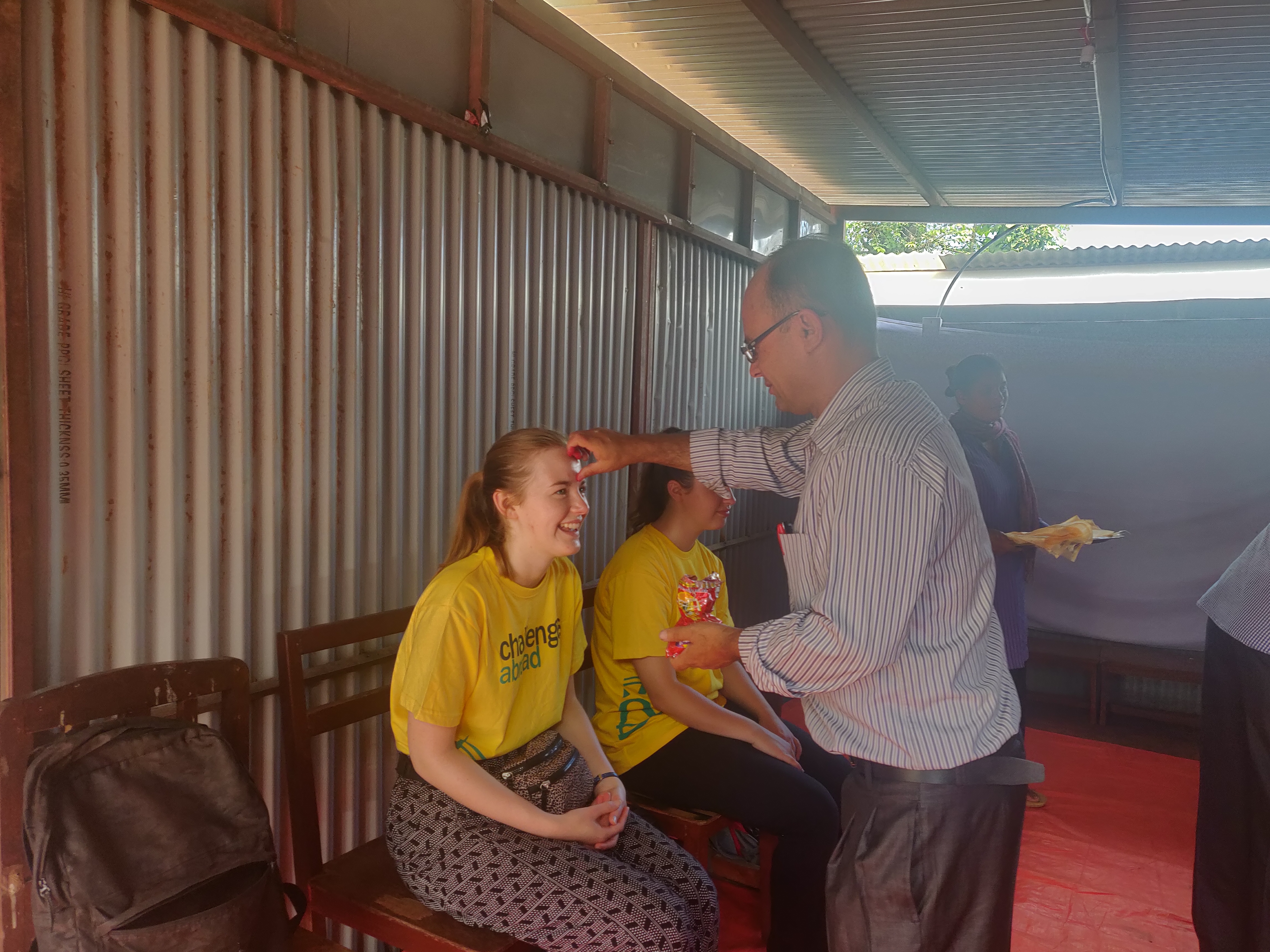
While you may not be able to master the whole language, it is very important to know the basics. Such as “thank you.” Nepalese will use the word Dhanyabaad (Dhan-ya-vad), expressing thankfulness to someone. If you would like to ask how someone is in Nepali you can say Sanchai Hunuhunxa? But you can generally get away with a smile and Namaste.
Interactions and culture shock
It is important that when you travel you may experience some culture shock as expectations and interactions may differ from your country of origin. Here’s some advice we received from our Senior Volunteer Mentor Program Coordinator, based in Nepal, Neeru:
- Abstain from any public displays of affection, nodding your head and smiling is perfect for interactions in public.
- When walking around avoid ‘aggressive’ postures (folding arms/hands on hips)
- Don’t point, use a flat hand instead.
- Don’t bargain at local shops – in-country staff can point out the cheaper places to go to.
- Don’t give money to beggars, instead support local communities through sustainable tourism.
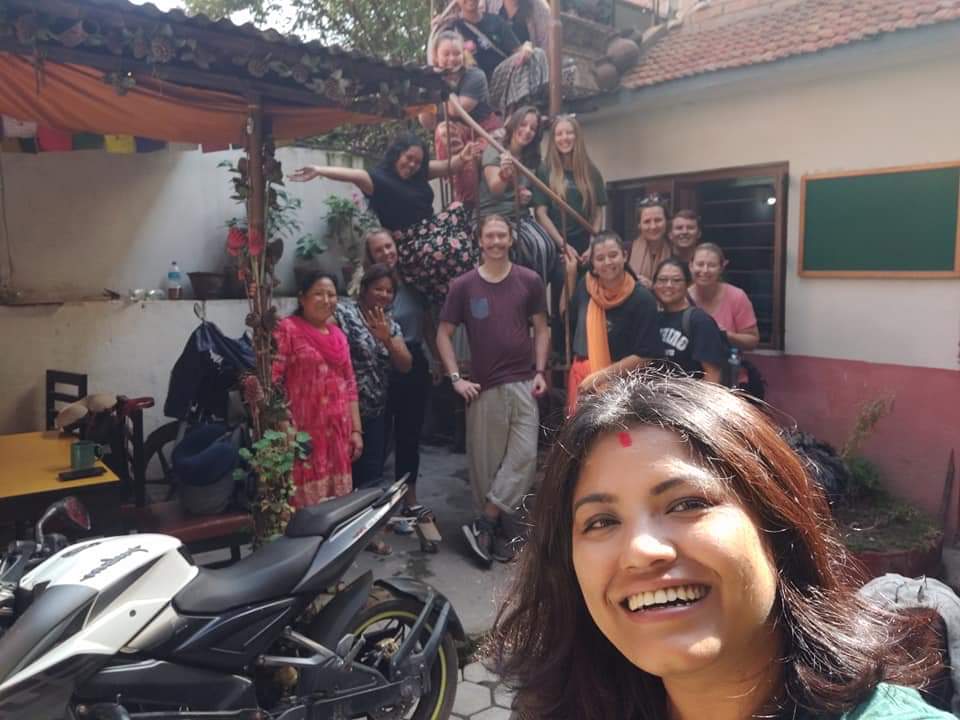
Neeru with some of our CAA Volunteers!
As a tourist you should be prepared that locals may stare at you and some people may take photos of you. Do not be offended or alarmed as they are just curious and excited by your visit. Sustained eye contact is quite normal.
It is all a learning process, but here at Challenges Abroad we are here to support you and ensure you are well aware of everything you need prior to departure. You will have such a wonderful and colourful experience with us in Nepal, with so much to see and do. We hope you’ll join us on your next experience!





